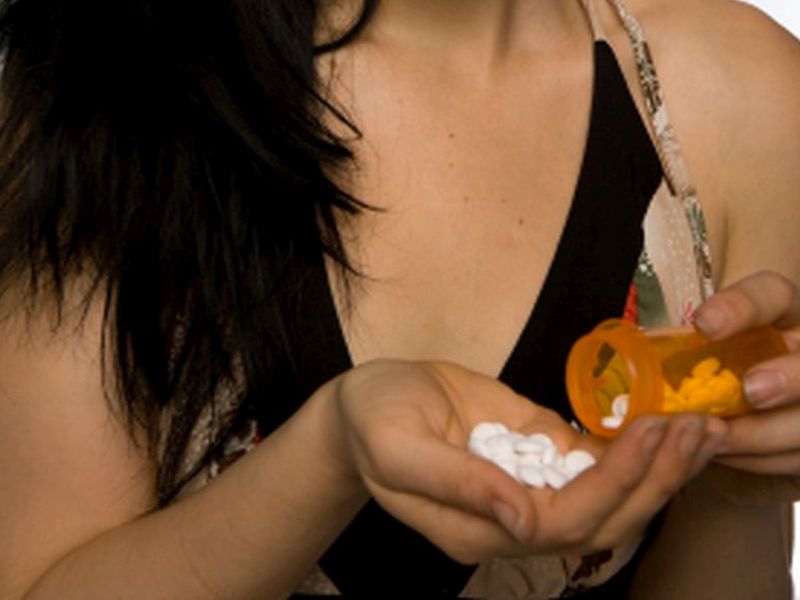WEDNESDAY, Nov. 15, 2017 (HealthDay News) — The top two medications used to treat opioid addiction appear equally safe and effective, a new study finds.
With the United States in the midst of an unprecedented opioid crisis, researchers conducted a head-to-head trial of two leading addiction treatments — naltrexone (Vivitrol) and buprenorphine-naloxone (Suboxone).
“The newer drug, naltrexone, was as effective in keeping patients off heroin, preventing relapse and overdose, as buprenorphine,” said lead researcher Dr. Joshua Lee.
These results should reassure patients and health care providers that naltrexone is safe to use to break the cycle of addiction, said Lee, an associate professor at New York University School of Medicine’s departments of medicine and population health.
“This gives people two choices,” he said.
Overdoses from heroin and prescription opioid painkillers like oxycodone (OxyContin) have claimed 300,000 lives since 2000, according to the U.S. Centers for Disease Control and Prevention. And President Donald Trump has declared the opioid epidemic a public health emergency.
Both anti-addiction drugs work by curbing the desire to get high. But naltrexone, a monthly injection, requires patients to detoxify first. This may make it less attractive to some addicts, as they have to go through withdrawal beforehand, Lee said.
Naltrexone is a narcotic blocker, not a substitute narcotic. “People maintaining on naltrexone are off opioids entirely,” Lee added.
Buprenorphine, on the other hand, is a daily pill that starts to work without the need to detox. Like methadone, it acts as a replacement for opioids.
But it too has its downsides. Because it acts like an opioid, patients can become dependent on it, and stopping can cause withdrawal symptoms, Lee explained. In addition, buprenorphine has the potential for abuse.
Naltrexone doesn’t have those issues, he said. But if stopped, the odds of becoming drug-addicted again are high.
Treatment with either drug could help reduce the 60,000 yearly overdose deaths, Lee said.
“People shouldn’t hesitate to seek treatment with either of these medications,” Lee said. “They can look at this study to see which one is going to fit them.”
Of course, these findings assume patients are motivated to get off opioids, he pointed out.
To test the drugs, the researchers had 570 addicts take either naltrexone or buprenorphine for 24 weeks. More than eight in 10 were addicted to heroin.
The study was conducted from 2014 to 2017 at eight community treatment centers affiliated with the U.S. National Institute on Drug Abuse Clinical Trials Network.
After about six months, the relapse rates were similar — 52 percent with naltrexone and 56 percent with buprenorphine, according to the report.
Craving for narcotics was lower with naltrexone, the researchers found. But by the end of 24 weeks, the rates were similar.
However, the “detox hurdle” was a significant problem for the naltrexone group. About one-quarter were unable to complete the detox process necessary to obtain the medication.
Only 6 percent of patients were unable to start buprenorphine, the findings showed.
Both drugs are expensive. Without insurance, they can cost from $600 to $1,200 a month, according to Lee. Most insurers, however, including Medicaid and Medicare, cover these costs.
A New York addiction specialist said these drugs are underused in the fight against drug abuse.
“There needs to be more access to these medications,” said Jonathan Morgenstern, an assistant vice president for addiction services at Northwell Health in New Hyde Park. He wasn’t involved in the study.
Morgenstern said many doctors have been opposed to using medication to treat addiction. “That’s changed a lot, but we are still trying to get all treatment providers to adopt medications as a routine part of care,” he said.
Also, more support services are needed to help with motivation and give addicts other care to prevent relapses, he suggested. “But the funding to provide that care is very limited,” he added.
The study was funded by the U.S. National Institute on Drug Abuse. The report was published online Nov. 13 in The Lancet.
More information
For more on drug addiction, visit the U.S. National Institute on Drug Abuse.
Copyright © 2025 HealthDay. All rights reserved.

